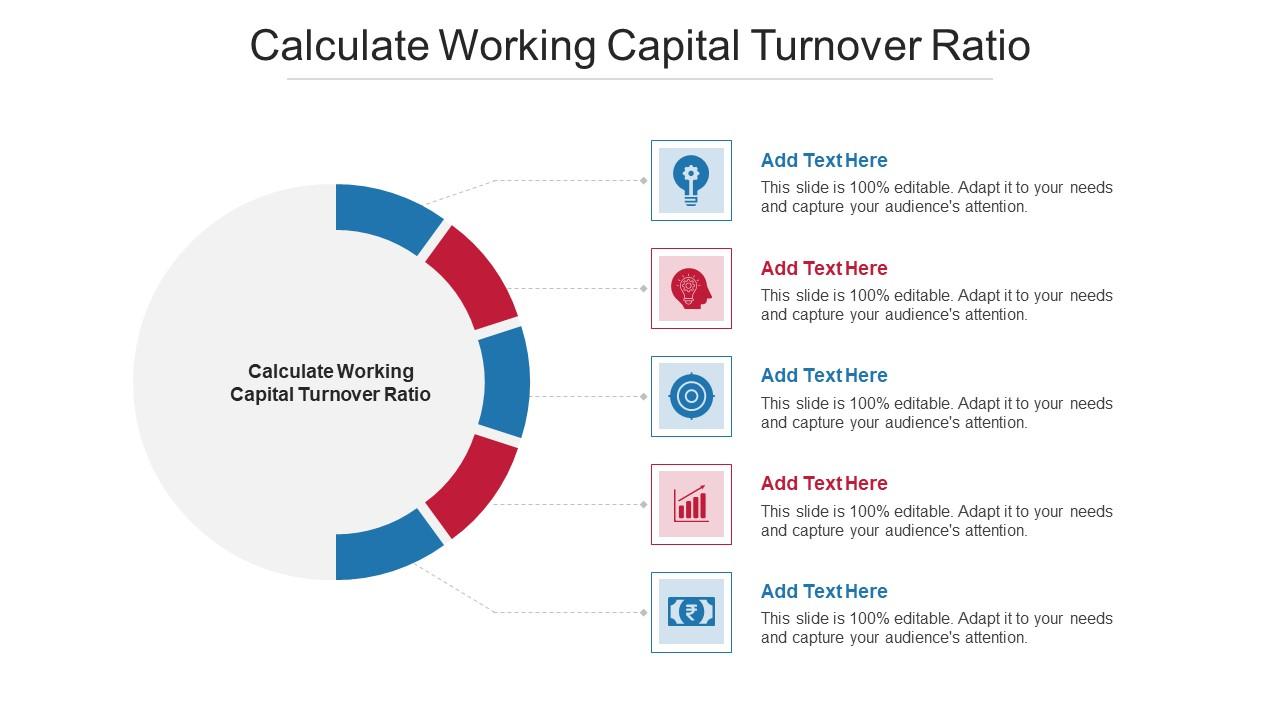

Finance
How Many Small Cap Stocks Are There
Published: January 17, 2024
Discover the world of small cap stocks in the finance industry. Learn how many small cap stocks exist and explore their potential for investment.
(Many of the links in this article redirect to a specific reviewed product. Your purchase of these products through affiliate links helps to generate commission for LiveWell, at no extra cost. Learn more)
Table of Contents
- Introduction
- Definition and Characteristics of Small Cap Stocks
- Methods for Determining the Number of Small Cap Stocks
- Historical Analysis of Small Cap Stocks
- Factors Affecting the Number of Small Cap Stocks
- Market Trends Related to Small Cap Stocks
- Challenges and Opportunities in Small Cap Investing
- Conclusion
Introduction
Small cap stocks are an important part of the investment landscape, offering investors the potential for high growth and significant returns. These stocks belong to companies with a relatively small market capitalization, typically ranging from a few hundred million to a few billion dollars. While they may be overshadowed by larger and more well-known companies, small cap stocks often present unique opportunities for investors willing to take on a slightly higher level of risk.
One of the key characteristics of small cap stocks is their potential for substantial growth. These companies are often in the early stages of their development, with innovative ideas, products, or services that have the potential to disrupt their respective industries. As a result, small cap stocks have the potential to deliver significant returns to investors who are able to identify the right opportunities.
Investing in small cap stocks can also provide diversification benefits to an investment portfolio. These stocks tend to have less correlation with larger-cap stocks, which means their performance may not be as heavily influenced by broader market trends. Including small cap stocks in a portfolio can help reduce risk and enhance potential returns.
Determining the exact number of small cap stocks can be challenging due to the dynamic nature of the stock market. However, various methods can be used to approximate this figure, including market capitalization thresholds and classification systems provided by financial exchanges and indices.
In this article, we will explore the definition and characteristics of small cap stocks. We will also discuss the methods for determining the number of small cap stocks and provide a historical analysis of their performance. Furthermore, we will delve into the factors that can influence the number of small cap stocks and examine the current market trends related to this investment category. Finally, we will highlight the challenges and opportunities that investors may encounter when investing in small cap stocks.
Definition and Characteristics of Small Cap Stocks
Small cap stocks are stocks of companies with a relatively small market capitalization, typically ranging from a few hundred million to a few billion dollars. Market capitalization is calculated by multiplying the current stock price by the total number of outstanding shares of a company.
One of the key characteristics of small cap stocks is that these companies are often in the early stages of their development. They may be young, emerging companies, or established companies that operate in niche markets. Unlike large-cap stocks, small cap stocks may not have a wide market presence or brand recognition, but they have the potential for rapid growth.
Another characteristic of small cap stocks is their ability to provide investors with higher growth opportunities compared to larger, more established companies. Small cap companies often have the potential for significant market share expansion, as they are more nimble and can respond quickly to market demands. Their growth potential can attract investors who are looking for above-average returns.
However, small cap stocks are also associated with higher levels of risk. These companies may have limited financial resources, making them more vulnerable to economic downturns or market fluctuations. They may also face challenges in accessing capital or attracting institutional investors.
In addition, small cap stocks can be more volatile compared to their large cap counterparts. Their stock prices may experience larger price swings, influenced by company-specific news, industry trends, or general market sentiment. While this volatility can present opportunities for profit, it also carries a higher level of risk.
Another notable characteristic of small cap stocks is their potential for inefficiencies in the market. Due to the limited coverage and information available on these companies, their stock prices may not always reflect their true value. Investors who can conduct thorough research and identify undervalued small cap stocks may be able to capitalize on these market inefficiencies.
Overall, small cap stocks offer investors the potential for high growth and significant returns. However, it’s important to carefully assess the risks and conduct thorough research before investing in small cap stocks. They are best suited for investors with a higher risk tolerance and a longer-term investment horizon.
Methods for Determining the Number of Small Cap Stocks
Determining the exact number of small cap stocks can be a complex task, given the dynamic nature of the stock market and the varying definitions of small cap. However, there are several methods that can be used to approximate the number of small cap stocks in a given market or index.
One of the common approaches is to set a market capitalization threshold to determine which stocks qualify as small cap. Financial exchanges and indices often use specific thresholds to classify stocks into different categories, such as large cap, mid cap, and small cap. For example, a threshold of $2 billion market capitalization may be used to define small cap stocks in a particular index.
Another method is to use classification systems provided by financial research firms and data providers. These systems employ various factors, such as market capitalization, revenue, and profitability, to classify stocks into different size categories. Investors can use these classification systems to filter and identify small cap stocks based on their individual criteria.
In addition, investors can also employ a relative approach to determine the number of small cap stocks. This involves comparing the market capitalizations of stocks within a specific universe or index to identify stocks that fall below a certain percentage of the total market capitalization. For example, stocks with market capitalizations below 1% of the total market capitalization of a given index can be considered as small cap.
It’s worth noting that the number of small cap stocks can vary depending on the market or index being considered. Different indices have different criteria and classification systems, which can result in variations in the number of small cap stocks identified. Furthermore, the number of small cap stocks may change over time as companies grow or shrink in market capitalization.
Investors can access various financial platforms, research reports, and data providers to obtain information on the number of small cap stocks. These sources provide comprehensive data that can help investors understand the size and composition of the small cap segment of the market.
Overall, while determining the exact number of small cap stocks can be challenging, utilizing market capitalization thresholds, classification systems, and relative approaches can help investors identify and analyze small cap opportunities in their investment strategies.
Historical Analysis of Small Cap Stocks
Small cap stocks have historically demonstrated the potential for significant growth and outperformance compared to their large cap counterparts. Examining the historical performance of small cap stocks can provide valuable insights into their investment potential and help investors make informed decisions.
Over the long term, small cap stocks have consistently delivered higher average annual returns compared to large cap stocks. Historical data shows that small cap stocks have outperformed both large cap stocks and the broader market, generating substantial wealth for investors who have recognized their growth potential.
One reason for the strong performance of small cap stocks is their ability to benefit from early-stage growth. These companies are typically more agile, dynamic, and have the potential to disrupt industries. As a result, they can experience rapid revenue and earnings growth, which translates into higher stock prices and returns for investors.
Furthermore, small cap stocks often offer greater opportunities for undervalued investments. These stocks may receive less attention from institutional investors and analysts, leading to fewer efficient pricing mechanisms. As a result, astute investors who conduct thorough research may discover hidden gems among small cap stocks that are priced below their intrinsic value.
It’s important to note that small cap stocks can also be more susceptible to market volatility and economic downturns. During periods of economic uncertainty, investors may become risk-averse and shift their focus to larger, more established companies. As a result, small cap stocks may experience more significant price declines during market downturns.
When analyzing the historical performance of small cap stocks, it’s crucial to consider the time horizon and the specific market conditions. Different market cycles and economic environments may have varying impacts on the performance of small cap stocks. Therefore, long-term investors should be prepared to ride out short-term volatility and focus on the potential for sustained growth over time.
In recent years, small cap stocks have gained increased attention and popularity among investors. The growth of technology, innovation, and entrepreneurship has created a fertile ground for small cap companies to thrive. Additionally, the availability of low-cost online trading platforms and increased access to information have made it easier for individual investors to invest in small cap stocks.
Looking ahead, small cap stocks are expected to continue being an attractive investment opportunity for investors seeking higher growth potential. However, it’s important for investors to conduct thorough research, diversify their portfolios, and carefully manage risk when investing in small cap stocks.
In summary, the historical analysis of small cap stocks reveals their strong long-term performance and the potential for higher returns compared to large cap stocks. Despite their higher volatility, small cap stocks offer investors opportunities for significant growth and the potential to uncover undervalued investment opportunities.
Factors Affecting the Number of Small Cap Stocks
The number of small cap stocks in the market can be influenced by various factors that contribute to the dynamic nature of the stock market. Understanding these factors is crucial for investors as they can impact the investment opportunities and potential returns in the small cap segment.
1. Market Conditions: Market conditions, such as economic growth, interest rates, and investor sentiment, can significantly affect the number of small cap stocks. During periods of economic expansion and favorable market conditions, more companies may enter the market as small cap stocks, driven by increased entrepreneurial activity and access to capital. Conversely, during economic downturns, the number of small cap stocks may decrease as companies struggle to survive or transition to other market segments.
2. Regulatory Environment: The regulatory environment can also impact the number of small cap stocks. Government regulations, such as listing requirements and reporting obligations, can influence a company’s decision to go public or stay private. Stringent regulations may deter smaller companies from entering the stock market as small cap stocks, resulting in a reduced number of opportunities for investors.
3. Mergers and Acquisitions: Mergers, acquisitions, and consolidations within the business landscape can impact the number of small cap stocks. When a small cap company is acquired by a larger company, it may cease to exist as a standalone small cap stock. Conversely, spin-offs or divestitures by larger companies may create new small cap opportunities in the market.
4. Initial Public Offerings (IPOs): The number of small cap stocks can be influenced by the influx of new companies entering the stock market through Initial Public Offerings (IPOs). IPOs provide small cap companies with the opportunity to raise capital and expand their business operations. A surge in IPO activity can increase the number of small cap stocks available for investment. However, IPO cycles can be cyclical, with periods of high and low activity, impacting the overall number of small cap stocks in the market.
5. Industry Trends: Industry-specific trends and developments can also impact the number of small cap stocks. Emerging industries, such as technology, healthcare, and renewable energy, often give rise to small cap companies that specialize in these areas. Conversely, as industries mature, small cap companies may grow and transition into mid-cap or large-cap status, reducing the number of small cap opportunities in those sectors.
6. Investor Demand: Investor demand for small cap stocks can influence the number and availability of these stocks. When there is high investor appetite for smaller companies, more companies may choose to go public as small cap stocks, thereby increasing the overall number of opportunities. Conversely, during periods of low investor interest, companies may delay or avoid going public as small cap entities, leading to a reduction in the number of small cap stocks.
It is important for investors to consider these factors when analyzing the small cap segment of the market. Understanding the dynamics that affect the number of small cap stocks can help investors identify trends, anticipate changes, and make informed investment decisions.
Market Trends Related to Small Cap Stocks
Understanding the current market trends related to small cap stocks is crucial for investors looking to capitalize on the potential opportunities and navigate the unique characteristics of this investment segment.
1. Outperformance Potential: In recent years, small cap stocks have shown strong performance, often outperforming their large cap counterparts. This trend can be attributed to several factors, including the ability of small cap companies to capitalize on niche markets, technological advancements, and disruptive business models. A focus on innovation and growth potential has attracted investors seeking higher returns, leading to increased attention on the small cap segment of the market.
2. Increased Market Participation: With the rise of online trading platforms and increased investor access to information, individual investors are actively participating in the small cap market. The democratization of investing has provided retail investors with the opportunity to identify and invest in small cap stocks, leading to greater liquidity and market activity in this segment.
3. Sector Rotation: Market trends often result in sector rotation, where certain industries or sectors experience heightened investor interest and outperformance. Small cap stocks can be influenced by these sector rotations as investors seek opportunities in emerging or high-growth industries. Currently, sectors such as technology, healthcare, and renewable energy are attracting substantial attention and investment in the small cap space.
4. Mergers and Acquisitions: The small cap segment has been conducive to mergers and acquisitions activity. Established companies seeking growth and market expansion may acquire smaller, innovative companies operating in niche markets. These acquisitions can provide liquidity events for small cap stockholders and validate the growth potential of the small cap sector.
5. Impact of Economic Conditions: Economic conditions, such as interest rates and inflation, can impact the performance and sentiment around small cap stocks. In a low-interest-rate environment, small cap companies may have greater access to capital, enabling them to fund their growth initiatives. However, higher interest rates or economic uncertainty can lead investors to favor larger, more stable companies, potentially impacting the performance of small cap stocks.
6. Regulatory Changes: Regulatory changes can have a profound impact on small cap stocks. Regulations related to specific industries, tax policies, or corporate governance can affect the competitiveness and operating environment for small cap companies. Investors should stay informed about regulatory developments that may impact the prospects of small cap stocks they hold or are considering investing in.
It is important for investors to regularly monitor and analyze these market trends related to small cap stocks. By understanding the dynamics of the market, investors can identify opportunities, manage risks, and make informed decisions that align with their investment objectives and risk tolerance.
Challenges and Opportunities in Small Cap Investing
Investing in small cap stocks offers both unique challenges and opportunities for investors. Understanding these factors is essential for making informed investment decisions in this segment of the market.
Challenges:
1. Higher Market Volatility: Small cap stocks tend to be more volatile compared to their large cap counterparts. Their stock prices may experience larger price swings influenced by company-specific news, industry trends, or general market sentiment. This increased volatility can present challenges for investors who may need to tolerate short-term fluctuations and remain focused on long-term investment objectives.
2. Limited Resources: Small cap companies often have limited financial resources, making them more vulnerable to economic downturns or market fluctuations. They may face challenges in accessing capital or attracting institutional investors, which can impact their ability to navigate through challenging times or finance growth initiatives.
3. Lack of Analyst Coverage: Small cap stocks may receive less coverage and attention from analysts and institutional investors compared to large cap stocks. This can result in limited available information or research on these companies, making it more challenging for investors to conduct thorough due diligence and assess their investment potential.
Opportunities:
1. Higher Growth Potential: Small cap stocks have the potential for significant growth, driven by their early-stage development, innovative products or services, and ability to capitalize on niche markets. These companies can experience rapid revenue and earnings growth, which may translate into higher stock prices and potentially larger returns for investors who identify the right opportunities.
2. Market Inefficiencies: The limited analyst coverage and information available on small cap stocks can create market inefficiencies. This means that stock prices may not always reflect the true value of the company, providing opportunities for investors who conduct thorough research and identify undervalued small cap stocks. Capitalizing on these market inefficiencies can lead to substantial returns for investors.
3. Diversification Benefits: Including small cap stocks in an investment portfolio can provide diversification benefits. Small cap stocks tend to have less correlation with larger-cap stocks, meaning their performance may not be as heavily influenced by broader market trends. Diversifying with small cap stocks can help reduce overall portfolio risk and enhance potential returns.
4. Potential for Mergers and Acquisitions: Small cap companies are often attractive targets for larger companies seeking growth and innovation. Acquisitions can provide liquidity events for small cap stockholders and potentially result in a premium being paid for their shares. Investors may benefit from potential capital gains if their small cap stocks are acquired at a premium.
In summary, investing in small cap stocks presents unique challenges and opportunities. While the volatility and limited resources of small cap companies can pose challenges, the higher growth potential, market inefficiencies, diversification benefits, and potential for M&A activity can provide attractive opportunities for investors who are able to navigate this segment of the market through thorough research and disciplined investing strategies.
Conclusion
Small cap stocks offer investors the potential for high growth and significant returns. These stocks belong to companies with a relatively small market capitalization, often in the early stages of their development. While investing in small cap stocks comes with unique challenges, such as higher market volatility, limited resources, and a lack of analyst coverage, it also presents attractive opportunities.
Historical analysis shows that small cap stocks have outperformed their large cap counterparts and the broader market over the long term. Their potential for higher growth, market inefficiencies, and diversification benefits make them an appealing option for investors seeking higher returns and portfolio diversification.
Methods for determining the number of small cap stocks include market capitalization thresholds, classification systems, and relative approaches. These methods help investors identify and analyze small cap investment opportunities within the overall market.
Understanding the current market trends related to small cap stocks is crucial. Factors such as outperformance potential, increased market participation, sector rotation, mergers and acquisitions, economic conditions, and regulatory changes impact the small cap segment and investment prospects.
While investing in small cap stocks requires thorough research, risk management, and a long-term perspective, it can provide opportunities for investors to capitalize on high-growth potential and market inefficiencies.
Overall, investing in small cap stocks requires a diligent approach and consideration of the unique characteristics of this investment segment. By understanding the definition, characteristics, methods for determining the number, historical performance, factors affecting the number, market trends, and challenges and opportunities in small cap investing, investors can make informed decisions to maximize the potential benefits of this exciting investment category.














